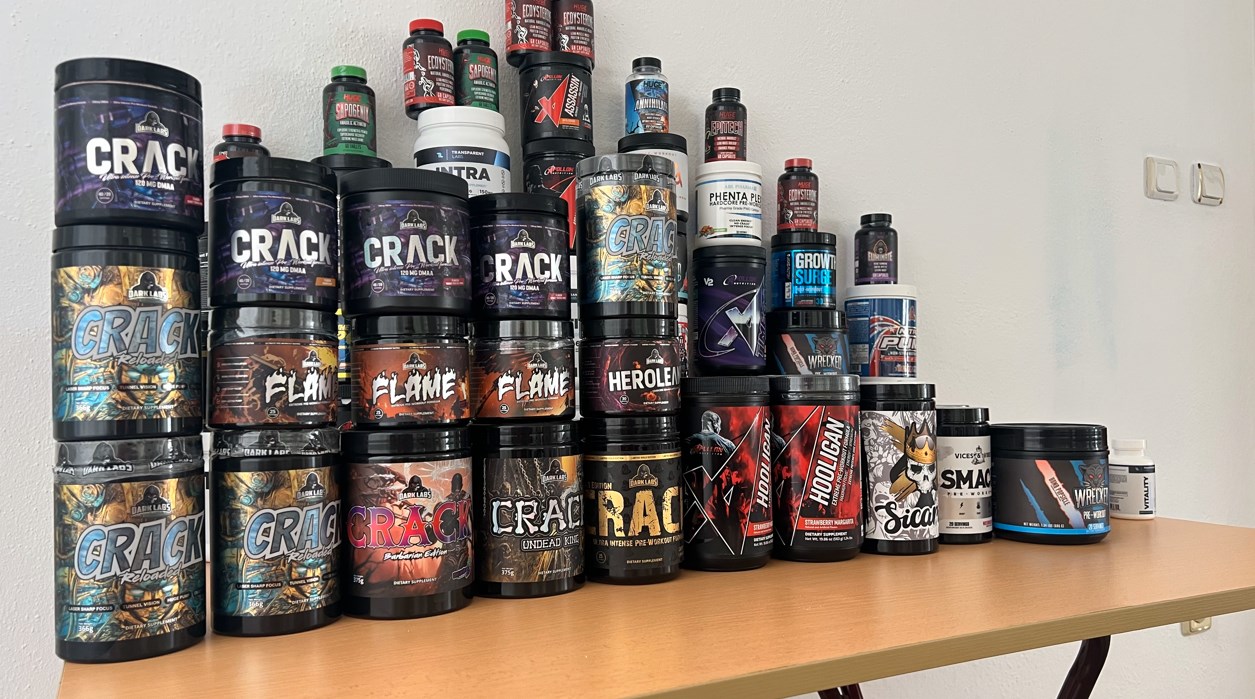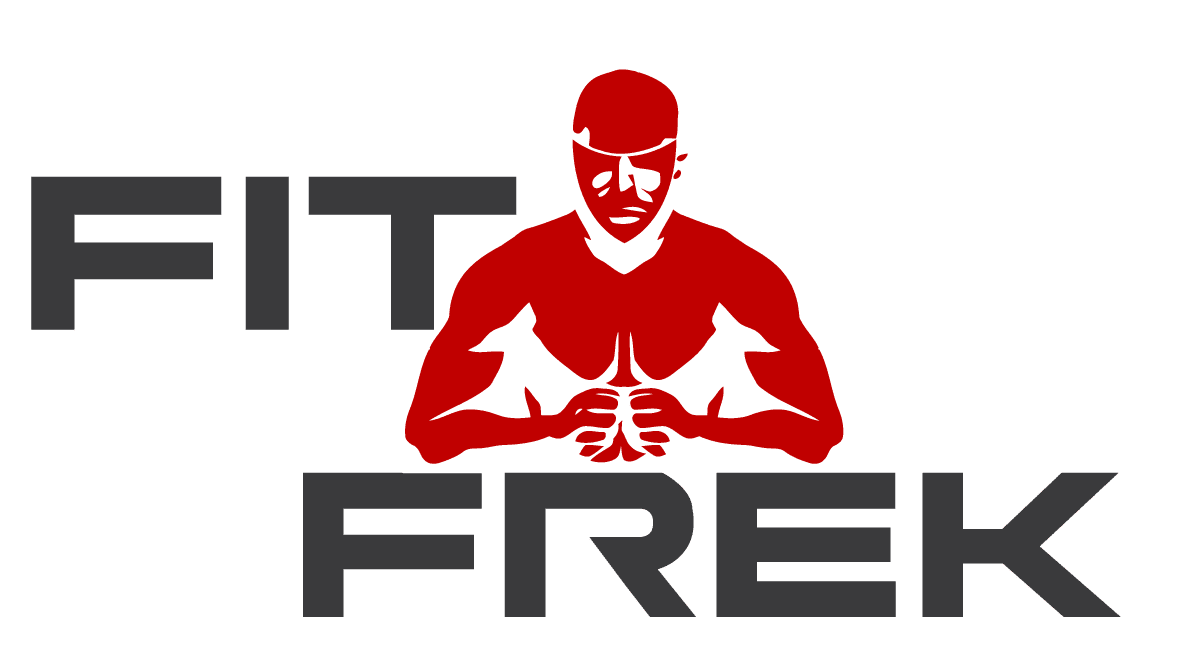
Are you looking to transform your body, shed pounds, or add bulk?
Maybe you're just looking to kick your training up a notch.
Whatever your fitness goals are, a proper training program is essential.
In this guide, we'll cover everything you need to know about training programs, from beginner workouts to advanced routines, and even nutrition.
Ready to get started? Let's dive in.
What exactly is a gym program?
It's a structured plan that outlines your workouts for a specific period, usually ranging from 4 to 12 weeks.
But why are gym programs so important?
They provide structure, keep you motivated, and ensure you're progressively challenging your body to achieve your fitness goals.

If you're new to the gym, starting with the right program is crucial.
A good beginner program provides the full-body stimulus you need to gain muscle while allowing adequate recovery between sessions.
It includes exercises that you can perform with proper form and that match your current fitness level.
As a beginner, you can progress very quickly because almost any exercise promotes muscle and strength gains.
But remember, it's important to avoid overexertion, which can lead to injuries or decreased performance.
Once you've been lifting for at least a year, you might be ready to transition to more advanced routines and programs.
These routines are designed to push your body further, helping you break through plateaus and continue making gains.
Advanced routines often involve more complex exercises and techniques, such as supersets and drop sets.
They also require a solid understanding of form and a higher level of physical fitness.
There are several types of training programs, each designed to cater to different fitness goals. Here are some of the most common types:
Strength Training Programs: These programs focus on building muscle mass and strength. They typically involve lifting heavy weights for a lower number of repetitions.
Cardiovascular Programs: These programs are designed to improve heart health and endurance. They typically involve activities like running, cycling, or swimming.
Weight Loss Programs: These programs combine strength training and cardiovascular exercise with a focus on burning calories to help you lose weight.
Flexibility Programs: These programs focus on improving flexibility and range of motion. They often involve stretching exercises or yoga.
Sports-Specific Programs: These programs are designed to help you improve in a specific sport. They focus on the skills and fitness areas most important to that sport.

There are countless types of gym routines and programs, each with its own unique benefits and challenges.
Let's break down some of the most popular types of gym programs to help you find the one that suits your goals best.
Strength training programs are designed to increase muscle mass and strength.
They typically involve lifting heavy weights for a lower number of repetitions. These programs are great for those looking to build muscle and increase their overall strength.
They can also help improve bone density, promote fat-free body mass, and boost the body's metabolic rate, aiding in weight loss.
Powerlifting programs are a subset of strength training programs that focus on the three fundamental powerlifting exercises: the squat, bench press, and deadlift.
These programs are designed to maximize your strength in these three lifts.
Powerlifting programs are intense and require a high level of physical fitness, but they can lead to significant strength gains.
Bodybuilding programs are designed to maximize muscle hypertrophy, or muscle growth.
They typically involve high-volume workouts, with a large number of sets and repetitions for each exercise.
These programs often focus on isolating specific muscle groups in each workout to maximize muscle growth.
See: The Ultimate Guide to Bodybuilding Programs
Bodybuilding programs require a significant time commitment and a carefully controlled diet, but they can lead to impressive changes in body composition.
CrossFit programs are high-intensity fitness programs that combine elements of cardio, weight lifting, and bodyweight exercises.
These programs are designed to improve overall fitness, including strength, endurance, flexibility, speed, and coordination.
CrossFit workouts are often varied and unpredictable, which can make them more engaging for some people.
Cardiovascular programs focus on improving heart health and endurance.
They typically involve sustained physical activity, like running, cycling, or swimming, that raises your heart rate.
Cardiovascular programs can help improve heart health, increase lung capacity, and aid in weight loss.
Flexibility programs focus on improving flexibility and range of motion. They often involve stretching exercises or yoga.
These programs can help improve posture, reduce muscle soreness and stiffness, and decrease the risk of injury.
Sports-specific programs are designed to help you improve in a specific sport.
They focus on the skills and fitness areas most important to that sport. For example, a sports-specific program for basketball might focus on improving vertical jump, agility, and endurance.
Each of these gym programs has its own unique benefits and challenges.
The best program for you depends on your personal fitness goals, interests, and current fitness level.
Remember, the most effective gym program is the one that you enjoy and can stick with consistently.
So, which program will you choose to reach your fitness goals?
Training Style:
Strength training programs primarily focus on lifting heavy weights with fewer repetitions.
The goal is to increase the amount of weight you can lift over time, which leads to gains in muscle size and strength.
These programs often involve compound exercises, which work multiple muscle groups at once, such as squats, deadlifts, and bench presses.
Differences and Goals: Strength training programs are different from other types of gym programs because they focus on increasing strength rather than improving cardiovascular fitness or losing weight.
However, they can still aid in weight loss because they increase muscle mass, which boosts the body's metabolic rate.
These programs are ideal for those who want to build muscle, increase strength, and improve overall body composition.
Examples of Strength Training Programs
Ideal For: Those who want to build muscle, increase strength, and improve overall body composition.
Not Ideal For: Those who primarily want to improve cardiovascular fitness or flexibility.
Training Style:
Powerlifting programs are a specific type of strength training program that focuses on three fundamental exercises: the squat, bench press, and deadlift.
The goal is to maximize the amount of weight you can lift for one repetition of these exercises.
Powerlifting programs often involve low-volume, high-intensity workouts.
Differences and Goals:
Powerlifting programs are different from other strength training programs because they focus specifically on the squat, bench press, and deadlift.
These programs are designed to increase maximal strength rather than muscle size or endurance.
They are ideal for those who want to compete in powerlifting competitions or who simply enjoy the challenge of lifting heavy weights.
Examples of Powerlifting Programs:
Ideal For: Those who want to compete in powerlifting competitions or who simply enjoy the challenge of lifting heavy weights.
Not Ideal For: Those who are new to weightlifting or who have joint issues, as powerlifting, involves lifting heavy weights which can put significant stress on the joints.
Training Style:
Bodybuilding programs are designed to maximize muscle hypertrophy or muscle growth.
They typically involve high-volume workouts, with a large number of sets and repetitions for each exercise.
These programs often focus on isolating specific muscle groups in each workout to maximize muscle growth.
Differences and Goals:
Bodybuilding programs are different from other types of gym programs because they focus on muscle growth rather than strength or endurance.
These programs require a significant time commitment and a carefully controlled diet to ensure that the body has enough nutrients to build new muscle tissue.
They are ideal for those who want to increase muscle size and improve body aesthetics.
Examples of Bodybuilding Programs:
Ideal For: Those who want to increase muscle size and improve body aesthetics.
Not Ideal For: Those who are primarily interested in improving cardiovascular fitness or functional strength.

Training Style:
CrossFit programs are high-intensity fitness programs that combine elements of cardio, weight lifting, and bodyweight exercises.
Workouts are often varied and unpredictable, involving a wide range of exercises and movements.
Differences and Goals:
CrossFit programs are different from other types of gym programs because they aim to improve overall fitness rather than focusing on a specific area like strength or endurance.
These programs can be intense and challenging, but they can also be scaled to suit different fitness levels.
They are ideal for those who enjoy varied, high-intensity workouts and who want to improve their overall fitness.
Examples of CrossFit Programs:
Ideal For: Those who enjoy varied, high-intensity workouts and who want to improve their overall fitness.
Not Ideal For: Those who prefer more structured or specialized training programs, or those with certain injuries or health conditions, as CrossFit workouts can be intense and involve complex movements.
Training Style: Cardiovascular programs focus on sustained physical activity that raises your heart rate.
This could involve running, cycling, swimming, or using cardio machines like treadmills or elliptical trainers.
Differences and Goals:
Cardiovascular programs are different from other types of gym programs because they focus on improving cardiovascular fitness rather than strength or muscle size.
These programs can help improve heart health, increase lung capacity, and aid in weight loss.
They are ideal for those who want to improve their endurance, lose weight, or improve their heart health.
Examples of Cardiovascular Programs:
Ideal For: Those who want to improve their endurance, lose weight, or improve their heart health.
Not Ideal For: Those who are primarily interested in building muscle or strength.
Training Style: Flexibility programs focus on improving flexibility and range of motion.
They often involve stretching exercises or practices like yoga or Pilates.
Differences and Goals:
Flexibility programs are different from other types of gym programs because they focus on improving flexibility rather than strength, endurance, or muscle size.
These programs can help improve posture, reduce muscle soreness and stiffness, and decrease the risk of injury.
They are ideal for those who want to improve their flexibility, recover from workouts more effectively, or reduce the risk of injury.
Examples of Flexibility Programs:
Ideal For: Those who want to improve their flexibility, recover from workouts more effectively, or reduce the risk of injury.
Not Ideal For: Those who are primarily interested in building muscle or improving cardiovascular fitness.
Training Style: Sports-specific programs
Sports-specific programs are designed to help you improve in a specific sport.
They focus on the skills and fitness areas most important to that sport.
For example, a sports-specific program for basketball might focus on improving vertical jump, agility, and endurance.
Differences and Goals:
Sports-specific programs are different from other types of gym programs because they are tailored to the demands of a specific sport.
These programs can help improve sport-specific skills, increase performance in the sport, and reduce the risk of sports-related injuries.
They are ideal for athletes or those who want to improve in a specific sport.
Examples of Sports-Specific Programs
Ideal For: Athletes or those who want to improve in a specific sport.
Not Ideal For: Those who are looking for a general fitness program rather than a program focused on a specific sport.
Training Style:
Hybrid programs, such as powerbuilding, combine elements from different types of training to create a well-rounded fitness regimen.
In the case of powerbuilding, the program merges the strength-focused approach of powerlifting with the muscle-building emphasis of bodybuilding.
This means workouts typically involve heavy compound lifts like squats, deadlifts, and bench presses (characteristic of powerlifting) followed by higher-repetition isolation exercises (characteristic of bodybuilding) to target individual muscle groups.
Differences and Goals:
Hybrid programs are different from other types of gym programs because they aim to achieve multiple fitness goals simultaneously.
In the case of powerbuilding, the goal is to build both strength and muscle size. This differs from traditional powerlifting programs, which focus on maximal strength, and bodybuilding programs, which focus on muscle hypertrophy.
Hybrid programs can offer the best of both worlds, allowing you to increase your strength while also improving your physique. However, they require careful programming to ensure adequate recovery and prevent overtraining, as they can be quite demanding.
Examples of Hybrid Programs:
Ideal For: Those who want to build strength and muscle size simultaneously. They're also a great choice for those who enjoy the intensity of powerlifting but also want the aesthetic benefits of bodybuilding.
Not Ideal For: Not be ideal for beginners who are new to weightlifting, as they can be quite intense and require a good understanding of both lifting techniques and recovery strategies. Those with specific fitness goals that don't align with the dual focus of hybrid programs, such as those primarily interested in endurance training or flexibility.

Training Style: Bodyweight programs utilize your own body weight as resistance and can be performed with minimal or no equipment. These programs often incorporate exercises like push-ups, pull-ups, squats, lunges, and planks. They can also include more advanced movements like handstands and muscle-ups.
Differences and Goals: Bodyweight programs are different from other types of gym programs because they don't require weights or gym equipment. This makes them highly versatile and accessible, as they can be performed anywhere and at any time. These programs can help improve strength, endurance, flexibility, and balance. They are ideal for those who prefer to workout at home, those who travel frequently, or those who enjoy using their own body weight for resistance.
Examples of Bodyweight Programs:
Ideal For: Those who prefer to workout at home, those who travel frequently, or those who enjoy using their own body weight for resistance.
Not Ideal For: Those who are primarily interested in lifting heavy weights or specific sports training. While bodyweight exercises can certainly build strength and muscle, they may not provide the same level of resistance as weightlifting for more advanced athletes.
Periodization refers to the systematic planning of training and exercise.
The aim is to reach the best possible performance in the most important competition of the year.
It involves the progressive cycling of various aspects of a training program during a specific period.
In the context of gym programs, periodization can be used to focus on different fitness goals at different times.
For example, you might focus on building strength for a few weeks or months, then switch to a focus on hypertrophy (muscle growth), and then move on to a phase focused on endurance or power.
This approach allows you to develop multiple fitness attributes over time, while also helping to prevent plateaus and overtraining.
Intensity in a gym program refers to the level of effort required for a particular exercise or workout.
It's often measured as a percentage of your one-repetition maximum (1RM), which is the maximum amount of weight you can lift for one repetition of an exercise.
Other common measurements in gym programs include:
Your one-repetition maximum (1RM) is the maximum amount of weight you can lift for one repetition of an exercise. It's a common way to measure strength and track progress in a strength training program.
While the most accurate way to determine your 1RM is to actually lift a maximum load, this can be risky, especially without proper supervision. Instead, you can estimate your 1RM based on the amount of weight you can lift for a higher number of repetitions.
One common method is the Epley formula:
1RM = weight + (weight x repetitions x 0.0333)
For example, if you can lift 100 pounds for 10 repetitions, your estimated 1RM would be 100 + (100 x 10 x 0.0333) = 133 pounds.
Your effort level per set, often referred to as Rate of Perceived Exertion (RPE), is a subjective measure of how hard a set feels.
An RPE of 10 means you performed a set to failure (you couldn't do one more rep), while a lower RPE indicates you had more reps "in the tank." Tracking RPE along with your sets, reps, and weights can help you manage your training intensity and ensure you're progressing over time.

You've probably heard the saying, "You can't out-train a bad diet." And it's true.
While gym work stimulates muscle and strength gains, nutrition plays a major role in recovery and exercise optimization. Ensuring your food intake is adequate to meet the demands of your training is crucial.
Recommended Resource: Guide to Hardgainers Nutrition
This involves sufficient calorie, protein, carb, and fat intake based on your training intensity and physique goals.
Here's a breakdown of the key components of nutrition for gym-goers:
Protein: Essential for muscle repair and growth. Aim for 1.2 to 2.0 grams of protein per kilogram of body weight daily. High-protein foods include lean meats, poultry, fish, eggs, dairy products, legumes, and tofu.
Carbohydrates: Your body's primary energy source during high-intensity workouts. The amount you need can vary greatly depending on your total daily energy expenditure and fitness goals. Examples of carbohydrate-rich foods include whole grains, fruits, vegetables, legumes, and dairy products.
Fats: Necessary for hormone production and nutrient absorption. While fats are calorie-dense, they should not be neglected in your diet. Examples of healthy fats include avocados, nuts and seeds, fatty fish, olive oil, and coconut oil.
Vitamins and minerals are crucial for various bodily functions, including energy production, bone health, and immune function. A balanced diet should provide all the necessary micronutrients.
Staying hydrated is crucial for performance and recovery. Aim to drink at least 2-3 liters of water per day, and more if you're sweating heavily during workouts.
While meal timing isn't as crucial as overall diet quality and calorie intake, it can still play a role in performance and recovery. Try to consume a balanced meal 2-3 hours before workouts and a post-workout meal with protein and carbs to aid recovery.
While a balanced diet should always be the foundation, certain supplements can complement your gym program and help you reach your fitness goals.
Recommend resources:
Here are some commonly used supplements:
Protein powder can help you meet your daily protein needs, especially if you struggle to get enough protein from food. It's convenient and can aid muscle recovery and growth.
Creatine is one of the most researched supplements and is proven to increase power output and muscle size. It's beneficial for those doing high-intensity training.
Beta-Alanine can help buffer acid in muscles, leading to improved muscular endurance. It's beneficial for those doing high-intensity or endurance training.
Branched-Chain Amino Acids (BCAAs) can aid muscle recovery and reduce muscle soreness. They can be beneficial if you're doing intense training sessions.
Pre-workout supplements often contain a blend of ingredients like caffeine, beta-alanine, and nitrates designed to increase energy and performance during workouts.

What is a gym program?
A gym program is a structured plan that outlines specific exercises, sets, repetitions, and rest periods that you should follow to achieve your fitness goals. It can be tailored to focus on specific fitness areas such as strength, endurance, flexibility, or sport-specific skills.
How do I choose the right gym program?
Choosing the right gym program depends on your personal fitness goals, interests, and current fitness level. It's important to choose a program that aligns with your goals, whether that's building muscle, improving cardiovascular fitness, increasing flexibility, or improving in a specific sport. It's also crucial to choose a program that you enjoy and can stick with consistently.
Can I do gym programs at home?
Yes, many gym programs can be adapted for home workouts. Bodyweight programs, in particular, are great for home workouts as they require minimal or no equipment. However, other types of programs like strength training or powerlifting may require weights or other gym equipment.
What is the role of nutrition in gym programs?
Nutrition plays a crucial role in any gym program. It fuels your workouts, aids in recovery, and helps you reach your fitness goals. A balanced diet that includes adequate protein, carbohydrates, and fats is essential for optimal performance and recovery.
Do I need supplements for my gym program?
While a balanced diet should be the foundation of your nutrition, certain supplements can complement your gym program and help you reach your fitness goals. Supplements like protein powder, creatine, and beta-alanine can aid in muscle recovery and growth, and increase performance. However, it's important to consult with a healthcare professional before starting any new supplement regimen.
What are some examples of gym programs?
There are many different types of gym programs, including strength training programs like Starting Strength or StrongLifts 5x5, powerlifting programs like the Westside Barbell Program, bodybuilding programs like Arnold Schwarzenegger's Golden Six, CrossFit programs like CrossFit New England's Competitors Program, cardiovascular programs like Couch to 5K, flexibility programs like Starting Stretching, and sports-specific programs like DeFranco's Training for Football.
How often should I change my gym program?
It's generally recommended to change your gym program every 4-6 weeks to avoid plateaus and keep your workouts challenging. However, this can vary depending on your fitness level and goals. It's important to listen to your body and consult with a fitness professional if you're unsure.
Can I combine different types of gym programs?
Yes, many people combine different types of gym programs to meet their fitness goals. For example, you might combine strength training with cardiovascular training to build muscle and improve cardiovascular fitness. However, it's important to ensure that your combined program is balanced and allows for adequate recovery to avoid overtraining.
What is the best gym program for beginners?
The best gym program for beginners is one that focuses on full-body workouts and allows for adequate recovery time. It should include a mix of cardiovascular exercise and strength training, using exercises that are appropriate for your fitness level.
How often should I change my gym program?
Typically, you should change your gym program every 4 to 12 weeks. This helps to prevent plateaus and keeps your workouts challenging and interesting.
Can I create my own gym program?
Yes, you can create your own gym program. However, it's important to have a good understanding of exercise principles and techniques. If you're unsure, it's best to work with a fitness professional who can guide you.
Whether you're a gym newbie or a seasoned pro, a well-structured training program is key to achieving your fitness goals.
From beginner workouts to advanced routines, there's a program out there that's perfect for you.
And remember, nutrition is just as important as your workouts.
Useful Links
 About FitFrek
About FitFrekFitFrek operates as an independent platform, offering comprehensive workouts, programs, routines, guides, and unbiased reviews to accelerate your progress. We pride ourselves on our honesty, delivering straightforward and candid insights. FitFrek does not offer medical advice, diagnosis, or treatment services.